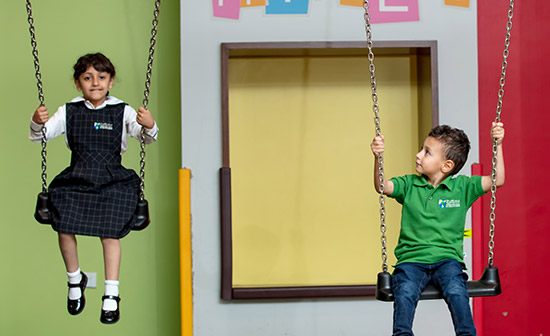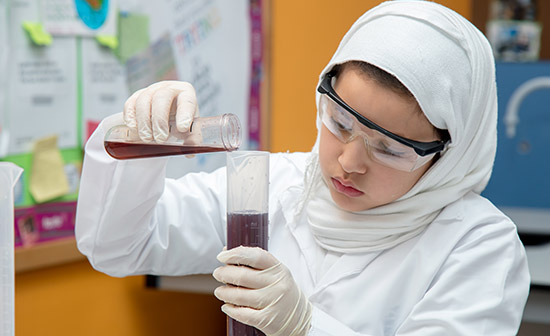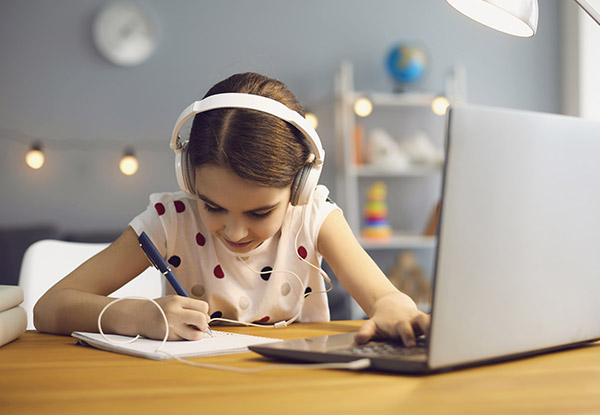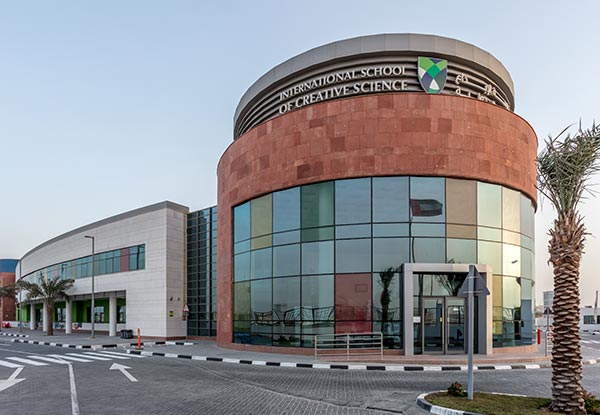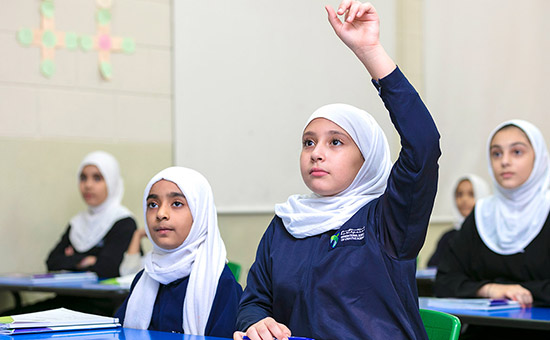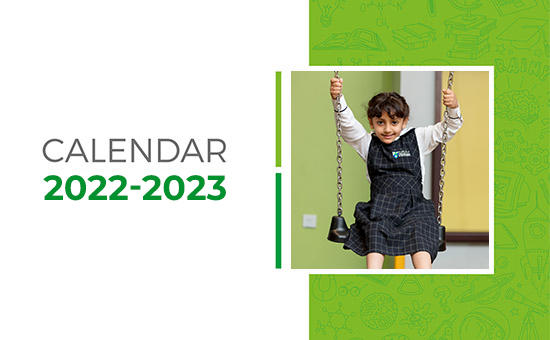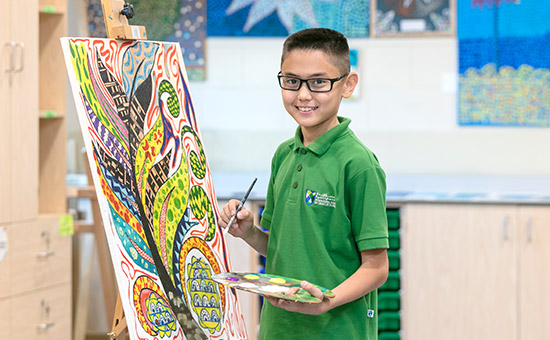Online Learning
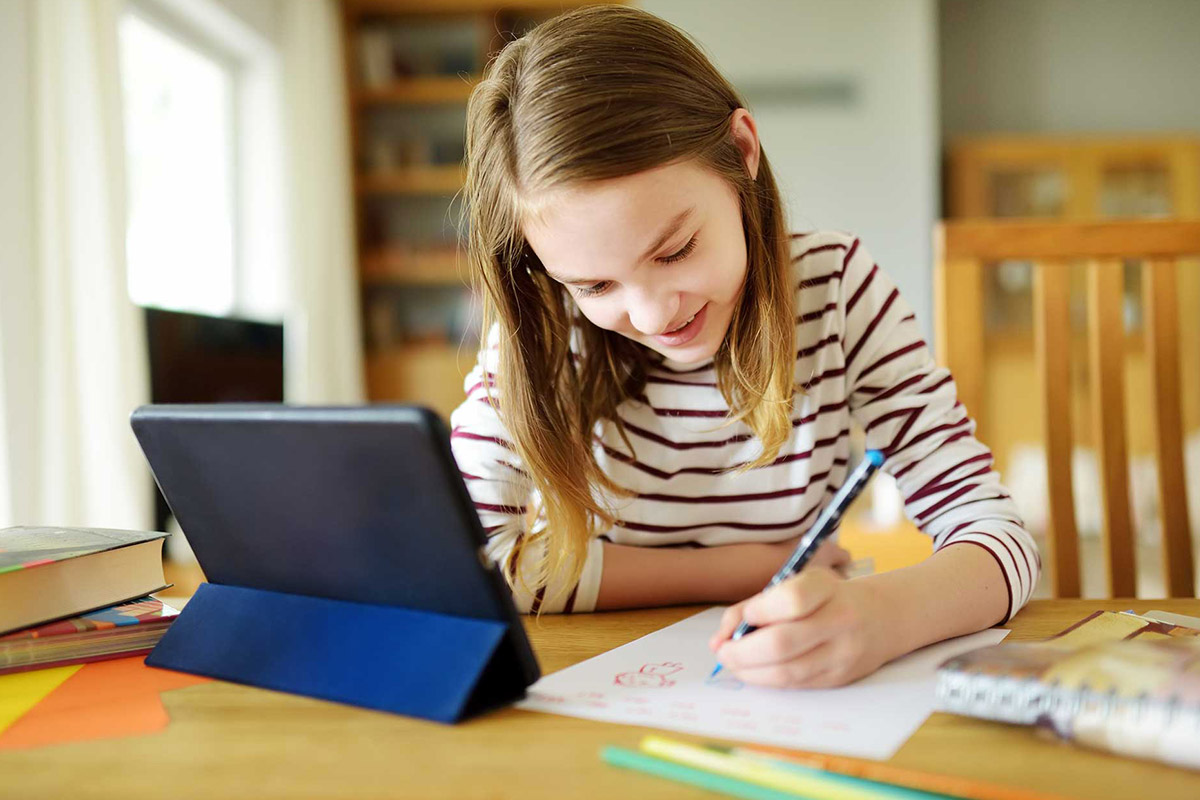
The Creative Science schools, at Bukhatir Education Advancement and Management International, strive to foster and instil a culture of autonomous learning, preparing students for college and real-life situations, as well as supporting competent, confident and responsible, global citizenship. In keeping with its commitment to providing our students with an excellent, well-rounded education, our online learning programme has been developed to provide continuity in teaching, and learning.
Our plan incorporates best practices based on experiences, as suggested by our experts in Visible Learning, E-learning, and those of our specialised team of educators, who work diligently with our learners.
Our Online Learning
Approach
Learning in the Foundation Stage is fun, and curriculum objectives are achieved through purposeful, well-planned play and practical activities. In line with the National curriculum of England, children between the ages of 3 and 5, follow the Early Years Foundation Stage (EYFS) curriculum. This curriculum is specifically designed to meet the needs of this age group, and to prepare pupils for entry into Key Stage 1. Pupils work towards the achievement of the Early Learning Goals.
Given the holistic nature of the EYFS curriculum, and the need to ensure our young learners’ development through interaction with their teachers and peers, we have designed the learning model to allow students to be in school for a part of each day.
Enrolment in EYFS has been capped at 20 students per section, allowing us to split the class into a morning shift (Bubble 1) and afternoon shift (Bubble 2); therefore, meeting the KHDA requirement of having no more than 10 students in a class, at a time.
Each school shift will include 2 hours and 45 mins of face-to-face instruction in school.
In addition to the three hours of in-school teaching and learning, there is also a component of online learning where learning will also be supplemented at home, in the form of pre-recorded lessons.
The morning shift (Bubble 1) will attend school between 7:15 AM - 10:00 AM. The afternoon shift (Bubble 2) will attend between 11.00 AM - 1.45 PM. Please note that EYFS students who use school transport will be assigned to the afternoon shift (Bubble 2).
At Creative Science schools, we are committed to providing a challenging curriculum with high expectations. The curriculum must fulfil, at minimum, the standards set by the UK, for each grade level. Students are instructed in the following academic subjects; Language Arts/English, Maths, Science, Social Studies, Moral Education, Arabic, Quran, Islamic Studies, Art, Home Economics, Physical Education, and Computer courses, at various skill levels.
The Creative Science schools take a holistic approach to the education of each child, as our goal is to meet the needs of every student, and bring out their individual best.
Students learn to maximise their reading and writing skills, and hone their mathematical and analytical abilities. Language arts, as well as Mathematics, are based on the common core program, integrating cross-curricular activities while fulfilling the requirements of the local authorities.
Our strong academic programmes include many hands-on activities, research opportunities, and lab assignments. When the first grade is completed, our students are on their way to become independent readers, and writers.
Formal teaching is offered in Quran, Islamic Studies, Arabic, and Moral Education. Quran lessons are taught to individual student abilities, with the primary focus being proper recitation, memorisation, and the basic understanding of vocabulary and meaning. In the Islamic Studies department, students learn the MOE Islamic Studies curriculum, and stories of the Prophets mentioned in the Quran. Arabic, like Islamic, Social Studies, and Moral Education, is also instructed based on the Ministry of Education.
- Students of Years 1 to 6, follow the blended learning model.
- Each class will be divided into Bubbles, where Year 1, according to KHDA guidelines, will not have more than 10 students. For Years 2 to 6, each bubble is limited to 14 students, ensuring classroom setups maintain the mandatory 1.5m social distance.
- For week 1, Bubble 1 will experience 3 days of in-school face-to-face learning, and 2 days of e-learning. Bubble 2 will attend in-school face-to-face learning for 2 days that week, with 3 days of e-learning. Bubbles are to be switched on the following week, ensuring Bubble 2 receives 3 days of in-school face-to-face learning, and Bubble 1 receives 2 days of in-school face-to-face learning.
- Online distance learning days will consist of both, live online classes, and pre-recorded lessons, as a response to our parents’ concerns about students’ having time to manage their workload.
- Using this blended approach, students will receive 30 lessons per week; 6 lessons per day, with school timing from 7.15 AM – 1.45 PM, allowing for sufficient curriculum coverage. In addition to core subjects, lessons in Quran, Art, Computing, Moral Education, and PE, are to remain, ensuring variety in learning activities.
Our goal in Secondary School is to provide children with an environment that allows them to develop both cognitively, and socially. Focus is placed on developing the ability to think critically, and use logical reasoning, applying previously learned knowledge, and being confident. This transitional stage instils good study habits, and skills that are expanded to include higher order thinking and questioning, across all subjects.
An engaging and rigorous academic programme is the pillar of our high school, where students receive intensive, yet compelling instructions, in core subjects and elective courses. Simultaneously, teachers focus on the development of learning, and study skills.
High school students complete four years of English and Mathematics, three years of History and Science, along with at least four years of Arabic language, as well as coursework in Quran, Islamic Studies, and Physical Education.
Teachers are encouraged to emphasise experiential, as well as traditional learning, incorporating contests, field trips, experiments, and special events, to invigorate their lessons.
- Students of Years 7 and 8 follow the blended learning model, being implemented from Years 2 to 6, where each class is divided into two bubbles, Bubble 1 and Bubble 2. Each bubble is limited to 14 students, ensuring classroom setups maintain the mandatory 1.5m social distance.
- In week 1, the Year 7 and 8 cohort of Bubble 1 will experience 3 days of in-school face-to-face learning, and 2 days of e-learning. Bubble 2 will attend in-school face-to-face learning for 2 days that week, with 3 days of e-learning. Bubbles are to be switched on the following week, ensuring Bubble 2 receives 3 days of in-school face-to-face learning, and Bubble 1 receives 2 days of in-school face-to-face learning.
- Online distance learning days will consist of both, live online classes, and pre-recorded lessons, as a response to our parents’ concerns about students’ having time to manage their workload.
- Using this blended approach, students will receive 30 lessons per week; 6 lessons per day, with school timing from 7.15 AM – 1.45 PM, allowing for sufficient curriculum coverage. In addition to core subjects, lessons in Art, Computing, and PE, are to remain, ensuring variety in learning activities.
- Students of Years 9 and 10 will attend school daily, from 7.15 AM – 1.45 PM. This is essential, as Year 9 is a key transition year in preparing for entry into iGCSEs, and recognising that Year 10, is an external exam preparation year group. With students in these year groups attending school daily, the number of students in each learning group will be limited, ensuring classroom setups maintain the mandatory 1.5m social distance, as mandated by the KHDA.



